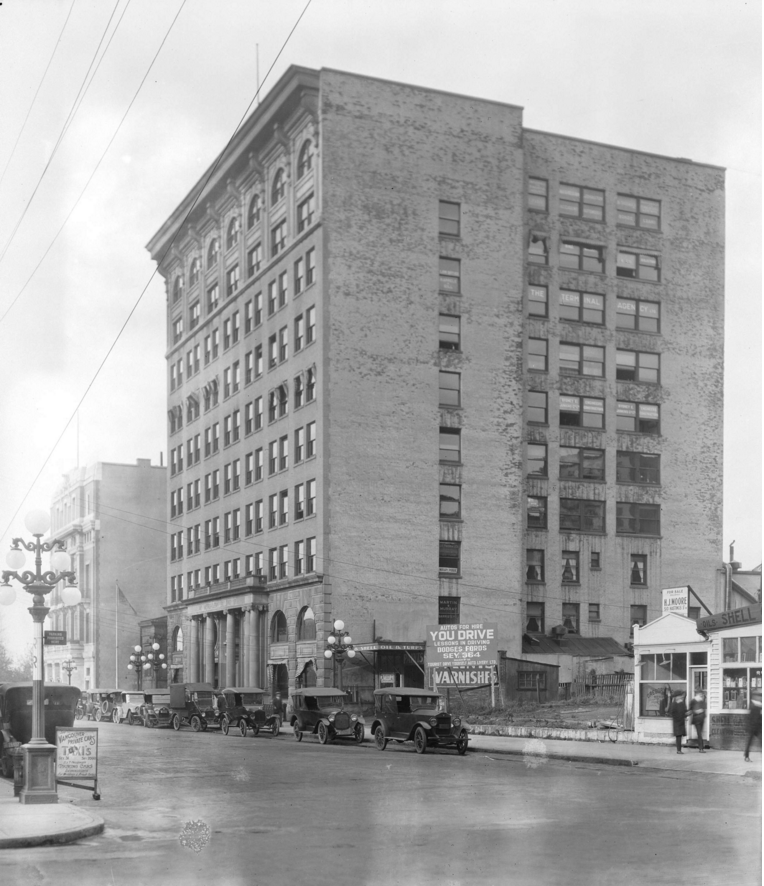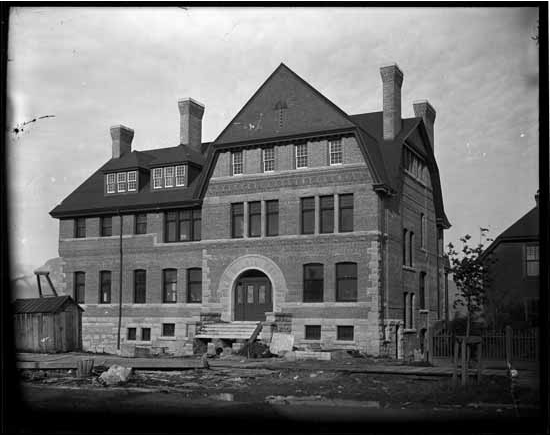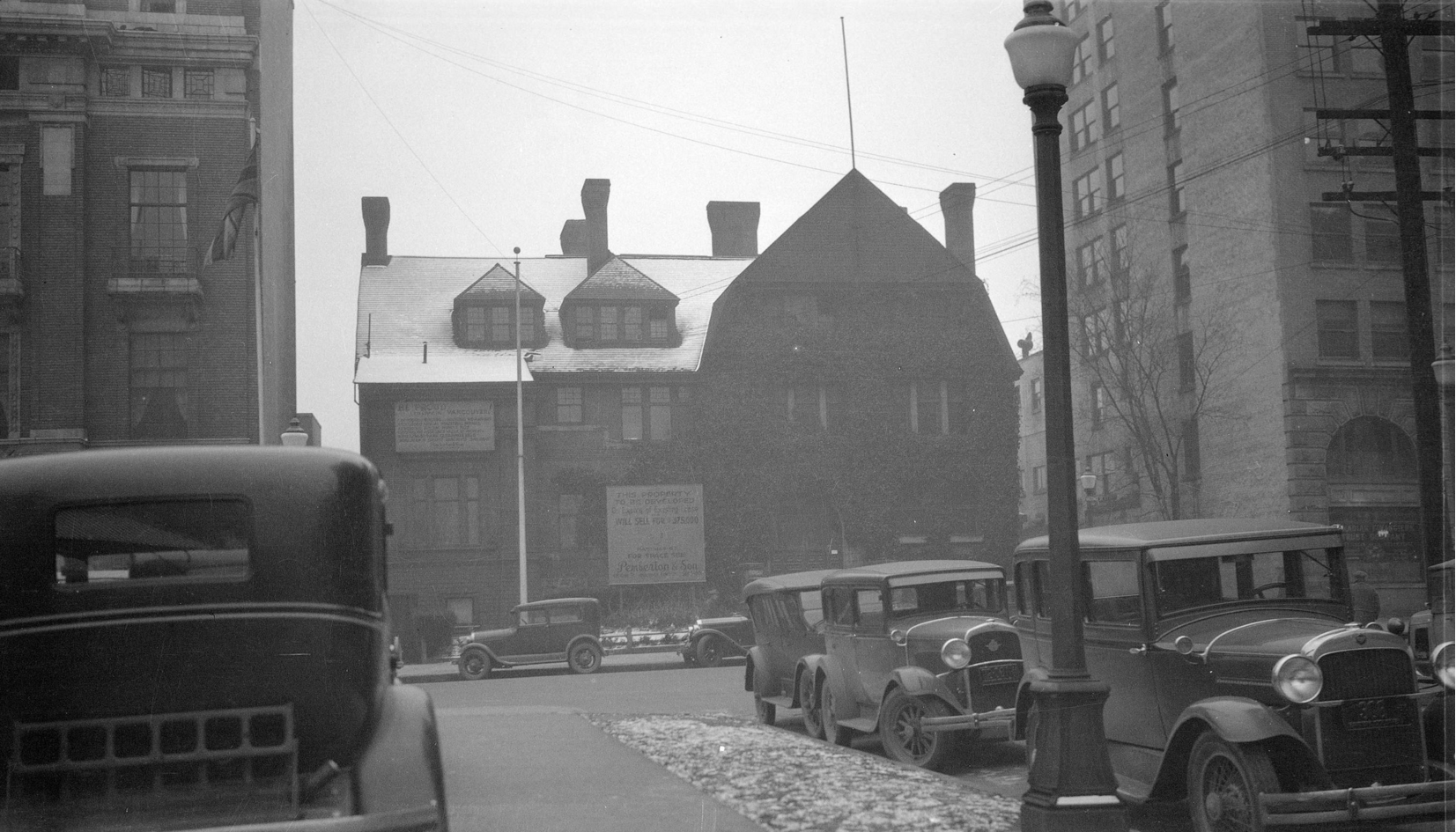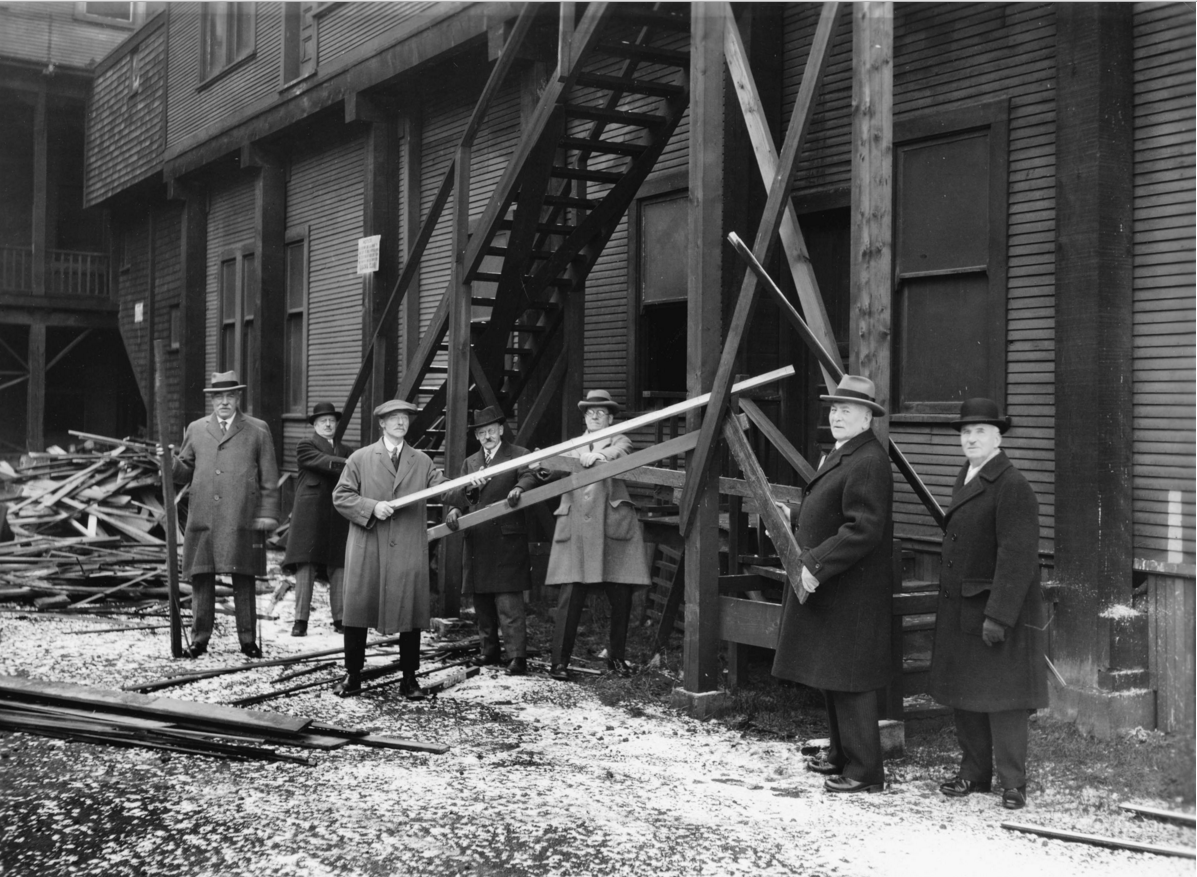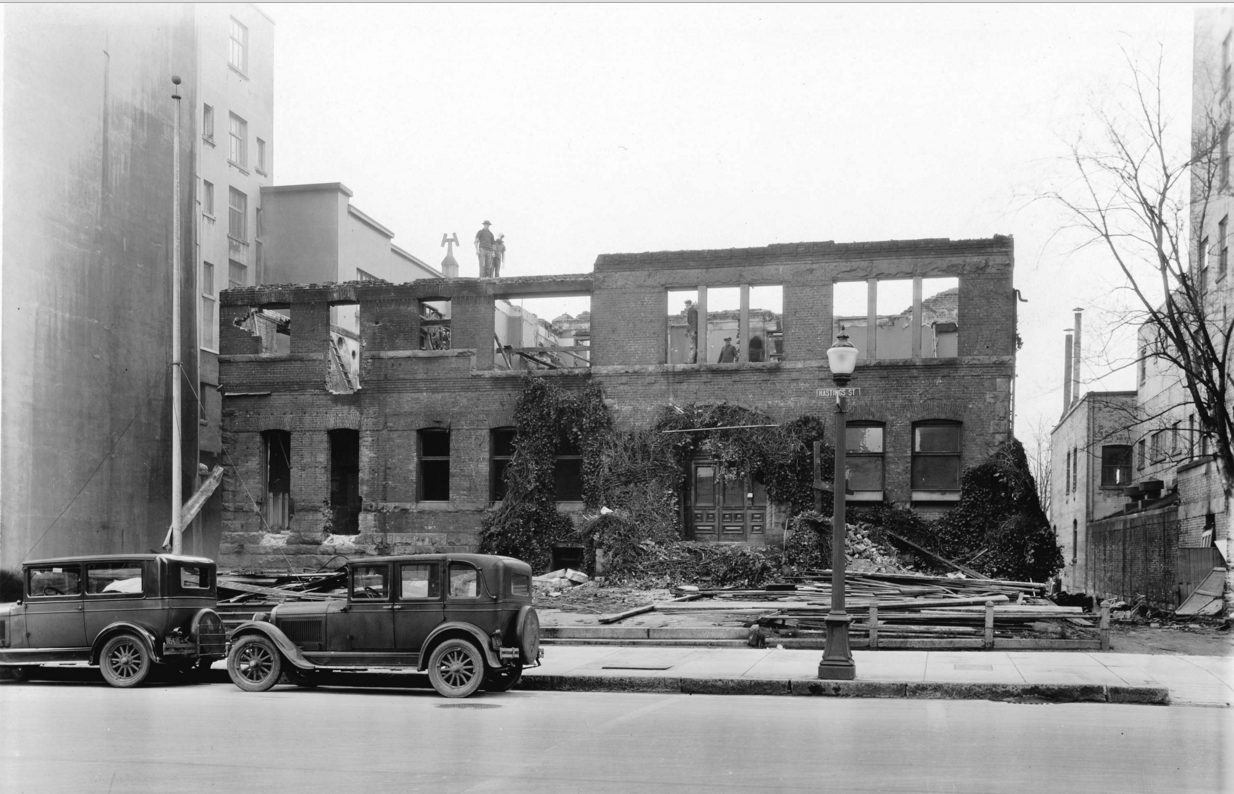It’s hard to imagine today, but when the Marine Building opened in 1930 it was the tallest building in Vancouver and stayed that way for more than a decade. If you look at the photo (below), you can see that when architects McCarter and Nairne, designed it, four of the 22 floors were built into the cliff above the CPR railway tracks. You can also see the second version of the Quadra Club and then what looks like an old shack perched on the edge of the cliff.
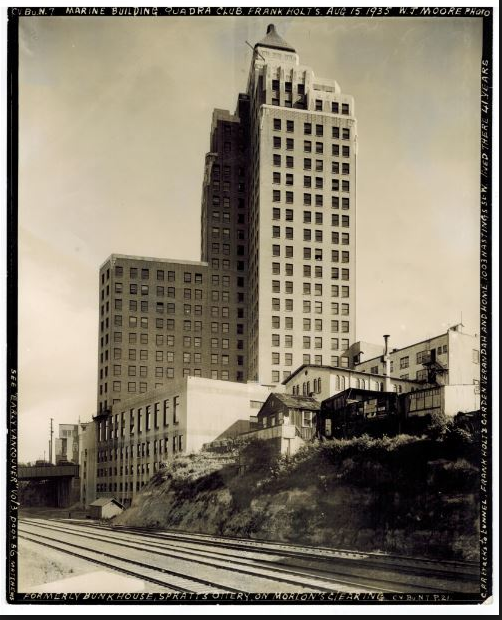
From Vancouver Exposed: Searching for the City’s Hidden History
I recently came across this war-time newspaper advertorial by Vancouver Breweries Limited. It shows the same 1935 photo, and circled is “the oldest building in Vancouver.”
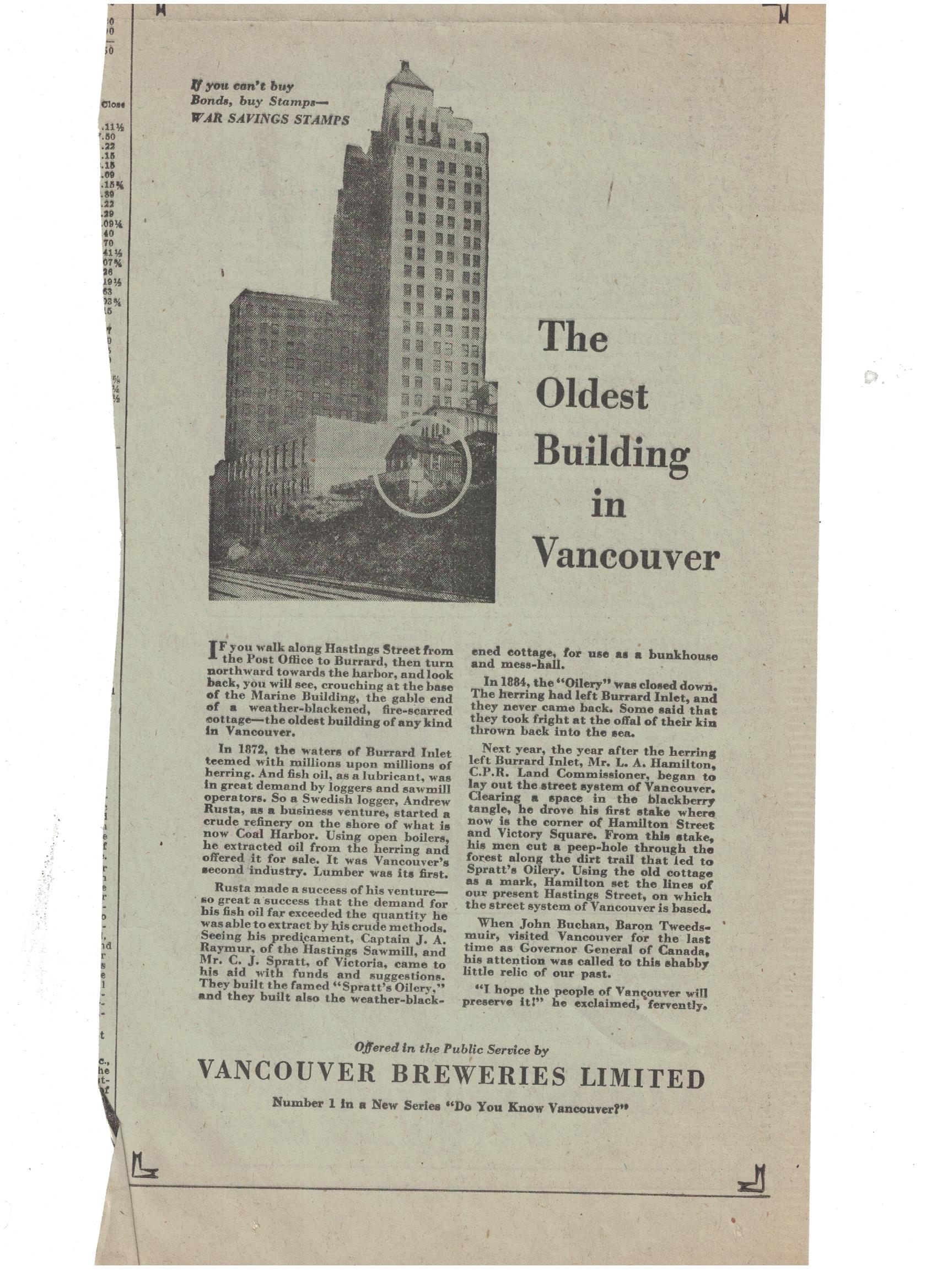
Do you know Vancouver?
According to the story, part of a series called “Do you know Vancouver!” the tiny house was used by CPR land commissioner Lauchlan Hamilton when he was surveying Vancouver in 1885. “Using the old cottage as a mark, Hamilton set the lines of our present Hastings Street, on which the street system of Vancouver is based,” goes the story. “When John Buchan, Baron Tweedsmuir visited Vancouver for the last time as Governor General of Canada, his attention was called to this shabby little relic of our past. ‘I hope the people of Vancouver will preserve it!’ he exclaimed, fervently.”
Well, no sir, we did not.
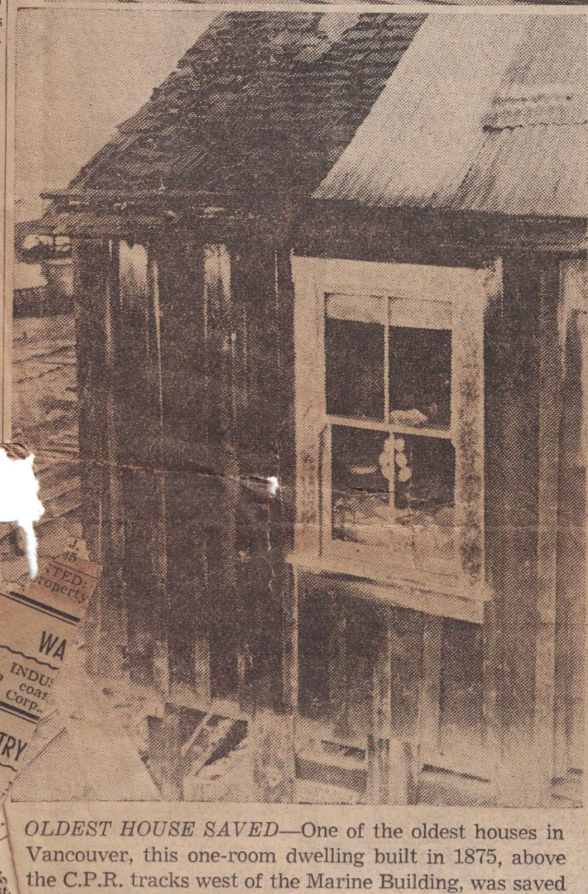
Spratt’s Oilery:
The little house was built in 1875 as a mess hall for Spratt’s Oilery and originally had five rooms. It survived the Great Fire, and in 1894, Frank Holt moved in. When the cannery moved out, Holt stayed on. When Frank found out that four of the rooms were taxable because they were on city property, he tore them down, and stayed in the one-room shack. He was still living there in 1943 when the foundations started to give way and the front porch fell down the embankment. Frank, who was 90 at the time, helped workers install a new foundation.
Then in 1946 a fire broke out and trapped Frank in the house. Miraculously, firefighters found Frank in the debris and carried him to safety. The house was not so lucky.

Frank came to Vancouver on the first transcontinental train. He was one of the founders of Christ Church Cathedral, and lived as a squatter in the one-room house in the shadow of the Marine Building for over half a century.
He died in December 1946, less than two months after his home burned down.
Related:
© All rights reserved. Unless otherwise indicated, all blog content copyright Eve Lazarus.


